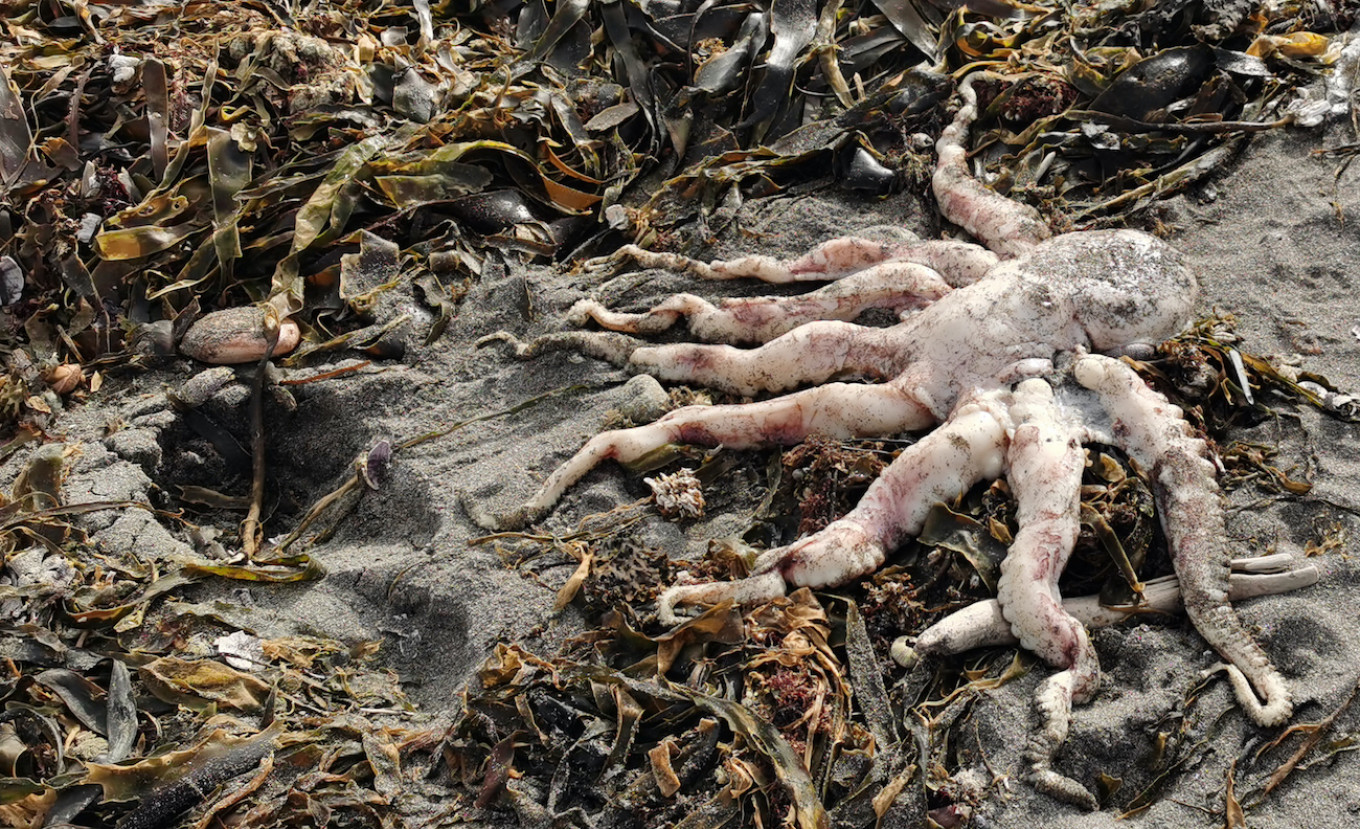
Nearly all seafloor-dwelling life in pollution-hit waters off Russia’s Pacific coast in the Kamchatka region has been wiped out in an unexplained mass death of marine animals, scientists told the region’s governor Tuesday.
Images showing hundreds of dead octopuses, large fish, sea urchins and crabs washed up on the shore of Khalaktyrsky beach went viral over the weekend as environmentalists sounded the alarm over an ecological disaster. Kamchatka governor Vladimir Solodov said that authorities were considering manmade pollution, natural phenomena or a volcano-related earthquake as possible causes of the mass deaths.
As much as 95% of marine life along the seabed in Avacha Bay has been killed, scientists told Solodov Tuesday following an expedition to the area to collect water samples, search for dead wildlife and carry out a survey dive.
“On the shore, we also did not find any large dead sea animals or birds,” scientist Ivan Usatov said at the meeting. “However, when diving, we found that there is a mass death of benthos [bottom-dwelling organisms] at depths from 10 to 15 meters — 95% are dead. Some large fish, shrimps and crabs have survived, but in very small numbers.”
The scientists from the Kronotsky Nature Reserve, the Kamchatka Research Institute of Fisheries and Oceanography (KamchatNIRO) and the Kamchatka branch of the Pacific Institute of Geography warned Solodov that these organisms’ deaths will also kill off the animals that rely on them for food.
“After this dive, I can confirm that there is an environmental disaster. The ecosystem has been significantly undermined and this will have long-term consequences, since everything in nature is interconnected,” said underwater photographer Alexander Korobok, who took part in the expedition, adding that he experienced chemical burns after the dive.
The scientists said they believe the contaminated area is much larger than the parts they examined.
A special commission is set to examine the waters near the Kozelsky and Radyginsky military test sites located near Petropavlovsk-Kamchatsky in order to determine whether a pesticide leakage caused the mass deaths.
Local surfers and swimmers first noticed a potential problem three weeks ago when they reported experiencing eye pain, sore throats, vomiting and fever after going into the water.
Greenpeace has said its tests of water samples from around Khalaktyrsky beach showed petroleum levels four times higher than normal, and levels of the toxic organic compound phenol 2.5 times higher than usual.
